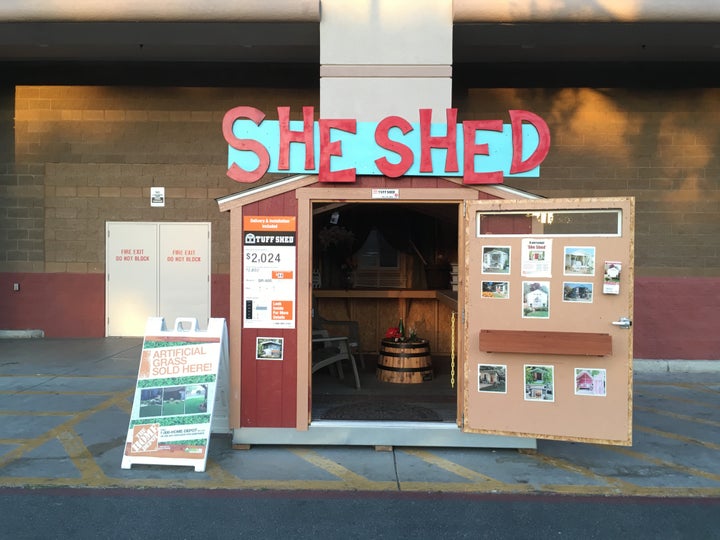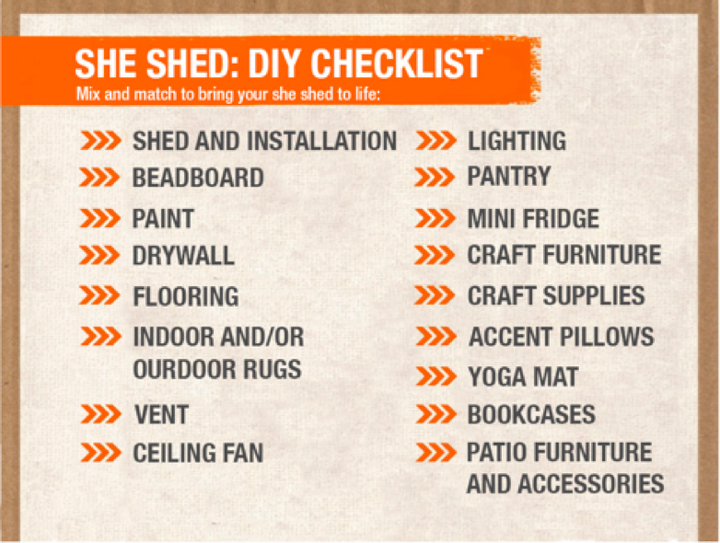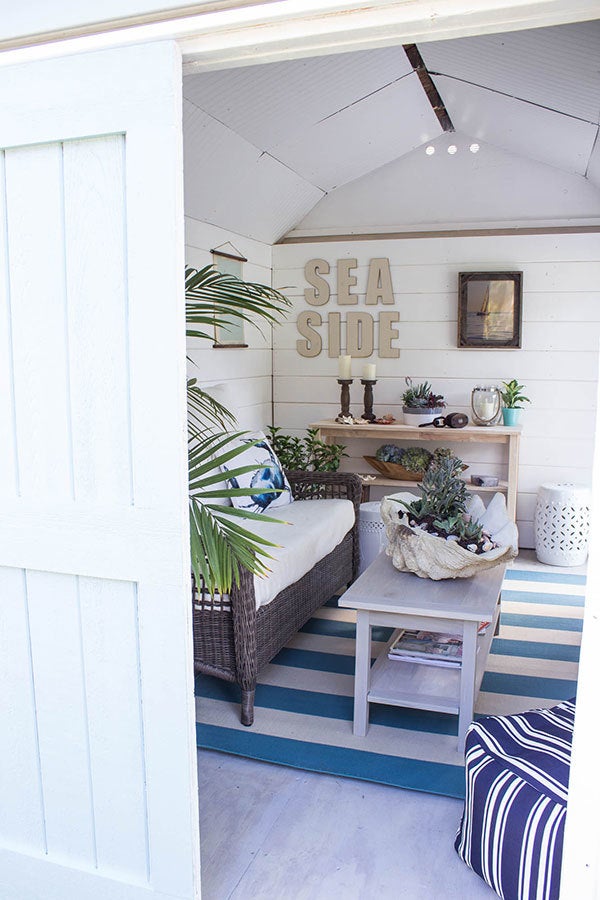Dear Home Depot,
You have held a special place in my heart for a long time. You color innumerable childhood memories. From the tiny wooden bookshelf I constructed at one of your workshops, to the orange apron I wore when I was taught to fix the kitchen sink, you’ve been there as I learned to build things.
But today, you’ve disappointed me. Today, I walked up to your familiar sliding doors and saw this:

Gracing the curb of a Los Angeles Home Depot
A brief internet search revealed that this is a national advertising campaign sanctioned at an institutional level ― and one that you introduced two years ago. It seems that this has not been enough time for someone to point out to you the problems with this “she shed,” and since I love you and believe you can change, I’m going to try.
What makes a shed a “she shed”? In the words of your website, “If you think sheds are only meant for lawn mowers and tools, think again.” You offer appropriate fillers on the sign on the shed’s door ― arts and crafts, book clubs, yoga mats, accent pillows, your very own pantry. In other words, a list of stereotyped feminine hobby fodder ― as you say, “it’s all in the decorative finishes.”

“She shed” filler suggestions from the Home Depot website
It’s easy to see what’s wrong with overt discrimination against women, but the “she shed” is subtler ― and therein lies its danger. “She sheds” exemplify benevolent sexism, a phenomenon that puts women on a pedestal, and at a distance. When women are stereotyped as “warm,” “maternal,” or “delicate” and in need of protection, they are denied agency and the opportunity to take on roles that don’t conform to traditional ideas of gender. Research shows that overt (or “hostile”) and benevolent sexism work together to reinforce gender inequality, and the “she shed,” a private space offered to shield a woman from a world that doesn’t belong to her, is a textbook example.
“Why can’t a 'she shed' be filled with skis, metalworking tools, or lawn mowers?”
The she shed trend comments on a woman’s “place” ― the blog posts on the Home Depot website and the numerous ones elsewhere describe the sheds as a nook for (mostly stay-at-home) moms to get away from it all, to have their own space with no kids, no chores, and no husband. And yet they are almost universally depicted as being decorated like another room in the house ― the people who work all day as homemakers have to make another mini-home 20 feet down the lawn to have a space they can take ownership of, where they can feel comfortable? And in that space, they’re supposed to participate only in yoga, pilates, knitting, and sipping wine?
I do not mean in any way to devalue these activities, but instead to point out how gendered they are ― they should be on a list of options that includes a wide spectrum of expressions of creativity or methods of relaxation, not just a tradition-entrenched subset of those deemed “acceptable” for women. Why can’t a “she shed” be filled with skis, metalworking tools, or indeed, lawn mowers? What makes a shed “for her” is not throw pillows and candles; it’s whatever the woman who designed it wants to fill it with.

A sea-themed ”she-shed” from the Home Depot Blog
“She sheds” also subscribe to the idea of maleness as generic: by distinguishing a set of items as “for women,” Home Depot implies that femininity is “other,” that it has to be specified, that anything unlabeled (i.e. generic or “normal”) is for men. This is called androcentrism, and psychological research shows that it reinforces negative gender biases. As a woman walking into your store, this labeling of gender tells me that this item on the curb is meant for me, and the rest of Home Depot is not.
“I’m a college student studying to be an aerospace engineer. I was at Home Depot to pick up hardware for my summer job at a rocket manufacturing company.”
I’m a college student studying to be an aerospace engineer ― I was at Home Depot to pick up hardware for my summer job at a rocket manufacturing company. I’m frequently asked by high school students about what it’s like to be at my particular university, or to study what I do. Without fail, every young woman who I have spoken with asks: “What is it like to be a woman in engineering?” Not a single young man has had to ask what his experience will be like, because the male experience is viewed as the norm. He is welcomed into the high, orange walls of Home Depot with open arms and rows of lawn mowers.
Home Depot, I have written you this letter because I am tired ― I am tired of gendered branding, “male” as “default,” and marketing teams who see nothing wrong with a “she shed.” I am exhausted by feeling an obligation to explain this form of sexism when I see such patronizing perpetuation of gender inequality. But I will continue explaining until I have a conversation with a woman in high school in which she does not have to ask how society will treat her if she wants to use her life to build things, until she can go to Home Depot to buy a hammer and not be boxed into a shed.
